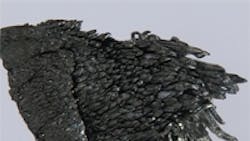Rare earth minerals shortage threatens U.S. manufacturing
“With a little of one of these elements, you can get a smaller, more powerful magnet, or an aircraft engine that operates at higher temperatures,” says subcommittee chairman Brad Miller (D-NC). “The United States, not so long ago, was the world leader in producing and exporting rare earths. Today, China is the world's leader. If we intend to foster a homegrown capability to make the devices that provide wind energy, we need to rebuild America's capability to supply its own needs in rare earth materials.”
Committee chairman Bart Gordon (D-TN) adds, “This is not the first time the Committee has been concerned with the competitive implications of materials such as rare earths. In 1980, we established a national minerals and materials policy to coordinate materials research and development. Unfortunately, over successive administrations, the effort to keep that program going fell apart. Now, it's time to ask whether we need to revive a coordinated effort to level the playing field in rare earths to support American business and jobs.”
Between 2005 and 2008, 91% of U.S. consumption of rare earths came from China and 9% from other sources, according to the U.S. Geological Survey. But China is now reducing exports of rare earth materials and working to leverage its deposits to bring manufacturing of high-value-added products containing rare earths to China's Inner Mongolia region.
“The Chinese have some different ideas about how to get the greatest benefit from this suddenly-valuable commodity beyond simply digging it up and selling it,” says Miller. “China appears to view rare earths as one of the incentives they can offer a technology firm scouting for a new plant location. We need to learn how to compete in attracting and retaining manufacturing firms that need access to rare earth elements in light of China's willingness to use their monopoly to our disadvantage.”
U.S. supplies are also strained by the continual discovery of new applications and national efforts to ramp up industries that depend on rare earths, such as clean energy technologies. During the recent meeting, House of Representative Members and witnesses also discussed ways to overcome the expected supply/demand imbalance, including increasing exploration for domestic sources, finding new overseas suppliers, research to find substitute materials, research to reduce the amount of rare earths needed, and increasing materials recycling. For more information, visit www.science.house.gov.
About the Author
Elisabeth Eitel
Elisabeth Eitel was a Senior Editor at Machine Design magazine until 2014. She has a B.S. in Mechanical Engineering from Fenn College at Cleveland State University.
